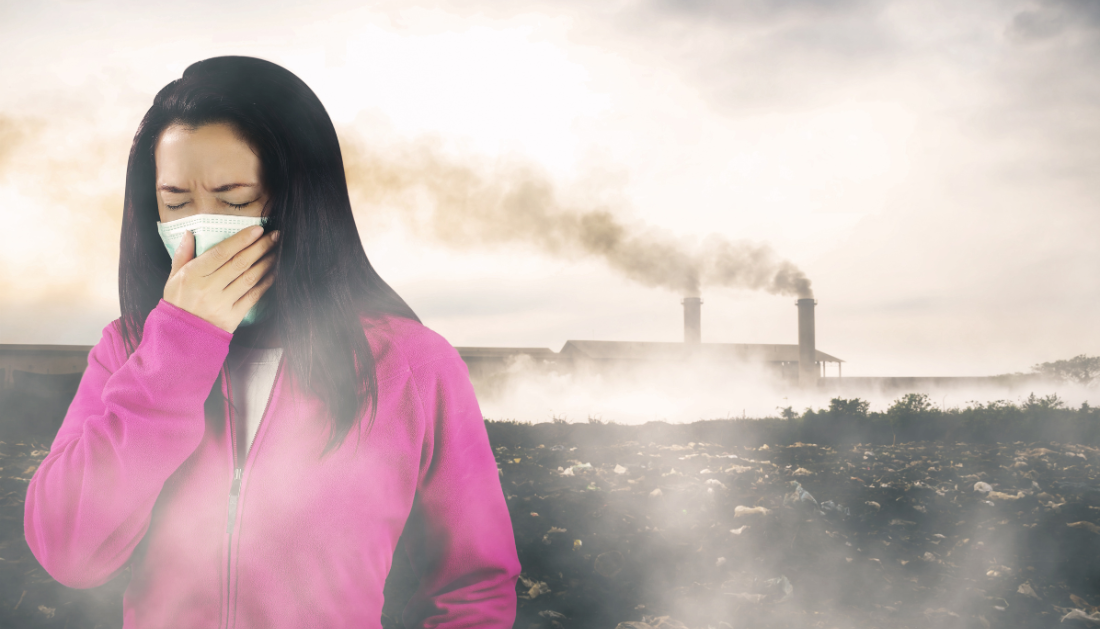

A recent study from Desert Research Institute (DRI) and the University of Nevada, Reno, provides critical insights into the impact of air pollution on cancer risk across the United States. Researchers analyzed public health data, U.S. Census information, and air pollution data from the Environmental Protection Agency (EPA) spanning 2011 to 2019. Their findings underscore significant disparities in cancer risks related to air toxins, revealing that urban communities, particularly those with lower-income and higher racial minority populations, face a higher cancer risk due to prolonged exposure to air pollution.
The study, published in Environmental Science & Technology, is one of the first to assess air pollution and its associated risks by looking at air pollutants as a whole, including their distribution over time. It found that low-income communities and those with higher proportions of racial minorities in urban areas are disproportionately affected by air pollution. For instance, regions like “Cancer Alley” in southern Louisiana—home to significant Black and Hispanic populations—exhibit notably higher risks of lung cancer, stroke, and other serious respiratory infections. Although efforts to reduce air toxins have made some improvements, disparities related to income persist, with lower-income neighborhoods continuing to bear a heavier burden.
The research also emphasizes the social factors contributing to these health disparities, such as poverty, housing age, and the proximity of industrial emissions. It highlights how obesity, sedentary lifestyles, and metabolic disorders, like asthma, worsen the effects of air pollution in already vulnerable communities. These findings have significant implications for public health policies, urging targeted efforts to reduce air toxics and ensure cleaner air in at-risk regions. Read more on the link between dementia and air pollution.
Importantly, this study invites individuals to become “citizen scientists” by using publicly available tools, like the EPA’s Air Toxics Screening Assessment, to monitor air quality in their communities. Patrick Hurbain, a lead researcher, hopes that these findings will inspire more involvement in the fight for cleaner air, urging people to understand and address the disparities that contribute to heightened cancer risk due to air pollution.
More information: Hurbain, P., et al. (2024) Environmental Inequality in Estimated Cancer Risk from Airborne Toxic Exposure across United States Communities from 2011 to 2019. Environmental Science & Technology. doi.org/10.1021/acs.est.4c02526.
more recommended stories
 Spatial Computing Explains How Brain Organizes Cognition
Spatial Computing Explains How Brain Organizes CognitionKey Takeaways (Quick Summary) MIT researchers.
 Gestational Diabetes Risk Identified by Blood Metabolites
Gestational Diabetes Risk Identified by Blood MetabolitesKey Takeaways (Quick Summary for Clinicians).
 Phage Therapy Study Reveals RNA-Based Infection Control
Phage Therapy Study Reveals RNA-Based Infection ControlKey Takeaways (Quick Summary) Researchers uncovered.
 Pelvic Floor Disorders: Treatable Yet Often Ignored
Pelvic Floor Disorders: Treatable Yet Often IgnoredKey Takeaways (Quick Summary) Pelvic floor.
 Urine-Based microRNA Aging Clock Predicts Biological Age
Urine-Based microRNA Aging Clock Predicts Biological AgeKey Takeaways (Quick Summary) Researchers developed.
 Circadian Control of Neutrophils in Myocardial Infarction
Circadian Control of Neutrophils in Myocardial InfarctionKey Takeaways for HCPs Neutrophil activity.
 E-Cigarette Use and Heart Attack Risk in Former Smokers
E-Cigarette Use and Heart Attack Risk in Former SmokersKey Takeaways for Clinicians and Nurses.
 36-Week Pre-eclampsia Screening May Reduce Term Risk
36-Week Pre-eclampsia Screening May Reduce Term RiskA New Preventive Strategy for Term.
 Cardiovascular Risk and Sudden Cardiac Death in Diabetes
Cardiovascular Risk and Sudden Cardiac Death in DiabetesRising Sudden Cardiac Death (SCD) Risk.
 Poor Kidney Function and Alzheimer’s Biomarkers Explained
Poor Kidney Function and Alzheimer’s Biomarkers ExplainedPoor kidney function may influence levels.

Leave a Comment